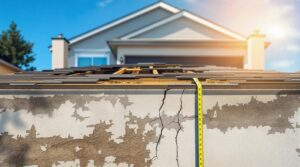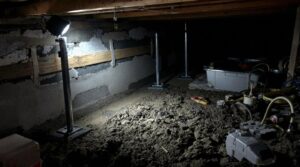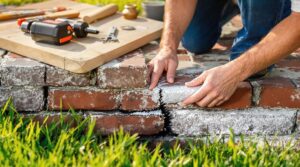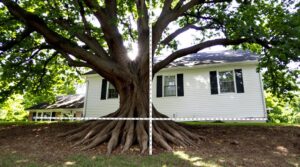Homeowners insurance generally does not cover foundation settling due to normal wear and tear or gradual deterioration. However, it may provide coverage for sudden, accidental damage to a home's foundation caused by specific perils such as fire, lightning, or severe weather events. The type and extent of coverage varies depending on the insurance policy and specific circumstances. A closer examination of policy terms and conditions can reveal further insights into applicable coverage and exclusions.
Key Takeaways
- Homeowners insurance typically does not cover foundation settling caused by normal wear and tear or gradual deterioration.
- Foundation damage from sudden, accidental occurrences like fire, lightning, or windstorms is usually covered.
- Damage from specific perils, such as fallen trees or vandalism, is typically covered under standard homeowners insurance policies.
- Earthquake and flood damage, including foundation settling, require separate policies and are not included in standard coverage.
- Homeowners should review their policy to understand specific covered perils and exclusions related to foundation settling and repairs.
Foundation Issues Covered by Homeowners Insurance
While homeowners insurance provides financial protection against various types of damage to a home, its coverage for foundation issues is generally limited to specific types of events.
Homeowners insurance covers foundation damage caused by sudden and accidental occurrences, such as lightning, fire, and windstorms. Damage resulting from specific perils outlined in the policy, like fallen trees or vandalism, is also typically covered.
However, normal wear and tear or gradual settling is not covered by most policies. The claims process for foundation issues must stem from a covered event, and homeowners should review their home insurance policy details to understand which specific perils are covered.
Insurance may cover damage from sudden events, but common causes of foundation damage, such as slow deterioration or neglect, are typically not covered.
Understanding what is covered by homeowners insurance can help homeowners guarantee they have adequate protection for foundation-related issues.
Filing a foundation damage claim requires detailed documentation and prompt notification to your insurance company within the specified timeframe.
Types of Foundation Damage Not Covered by Insurance
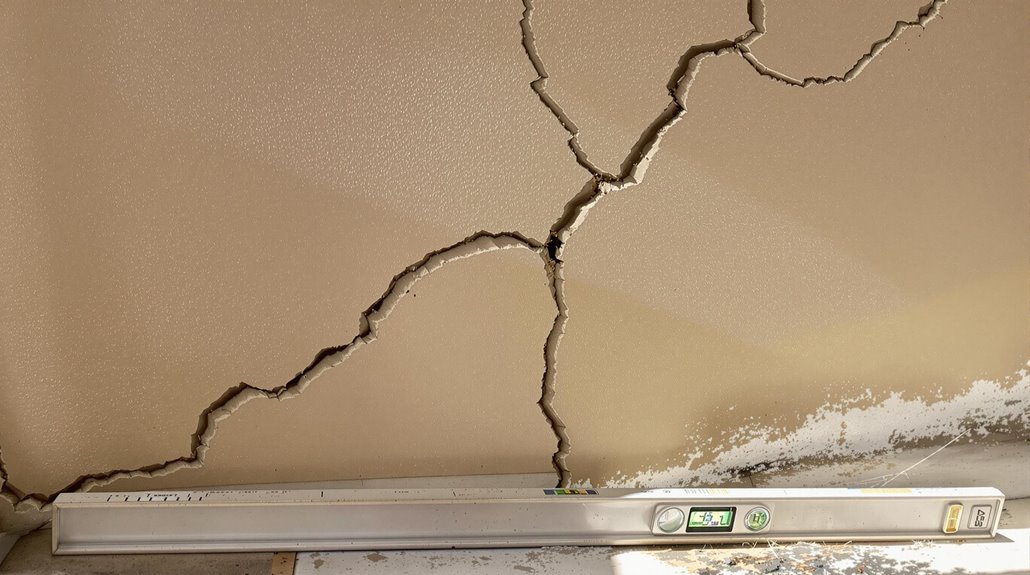
Foundation damage can arise from various sources, and not all of them are covered by homeowners insurance.
Types of foundation damage not covered by insurance include those resulting from normal wear and tear or gradual deterioration over time. Homeowners insurance policies also typically exclude damage caused by soil movement, such as natural land settlement or shifting due to moisture changes.
Moreover, claims related to foundation issues arising from negligence, like poor maintenance or construction flaws, are not covered. Additionally, earthquake and flood damage, which can lead to foundation issues, require separate policies and are generally not included in standard homeowners insurance coverage.
Groundwater intrusion through the foundation, often resulting from inadequate drainage, is also usually excluded from coverage.
It is essential for homeowners to understand these exclusions to manage their expectations regarding what their homeowners insurance policy will cover in the event of foundation damage.
Only about 27% of homeowners in designated flood zones maintain flood insurance that could help cover foundation damage from flooding.
Steps to File an Insurance Claim for Foundation Damage
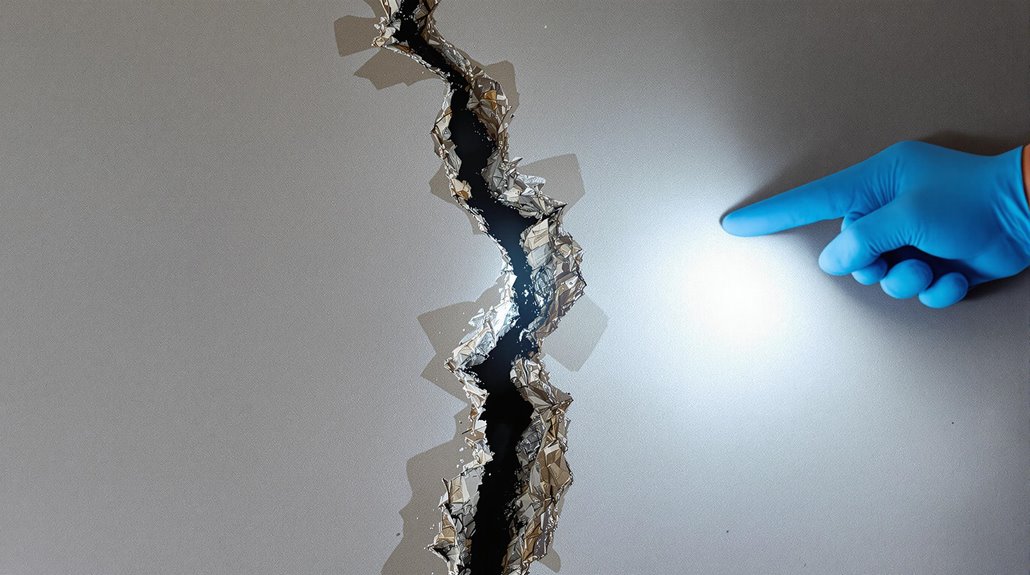
How do homeowners initiate the process of filing an insurance claim for foundation damage?
The first step is to verify that the foundation damage is covered under their homeowners insurance policy, which may require a professional assessment.
If coverage is confirmed, it is essential to document the damage with photos and videos, as well as gather any relevant records to support the claim.
Homeowners must then notify their insurance company promptly and complete any necessary claims forms.
An insurance adjuster will be assigned to assess the damage and verify the claim, so it is vital to have all documentation readily available.
Additionally, homeowners may need to work with an independent contractor to provide an estimate for repair costs, which may be required during the claims process.
Effective communication between the homeowner, insurance adjuster, and contractor is crucial for a successful claim outcome.
Common Causes of Foundation Problems and Prevention Tips

As a critical component of a home's structural integrity, a foundation's stability can be compromised by a variety of factors. Common reasons for foundation problems include soil saturation due to improper drainage, natural wear and tear, and external forces such as tree roots and expansive soils.
Foundation damage caused by these factors can lead to costly repairs. To prevent foundation issues, homeowners should prioritize home maintenance and monitoring of the soil beneath their property. Regular inspections of drainage systems and tree root growth can help mitigate risks.
Additionally, sudden water damage, such as that from burst pipes, should be reported promptly to insurance providers, as it is typically covered by homeowners policies. Recognizing warning signs of foundation problems early on can also help prevent more extensive damage from occurring. Working with a public adjuster can help maximize insurance compensation when foundation damage requires substantial repairs.
Understanding Policy Coverage and Limits for Foundation Repairs
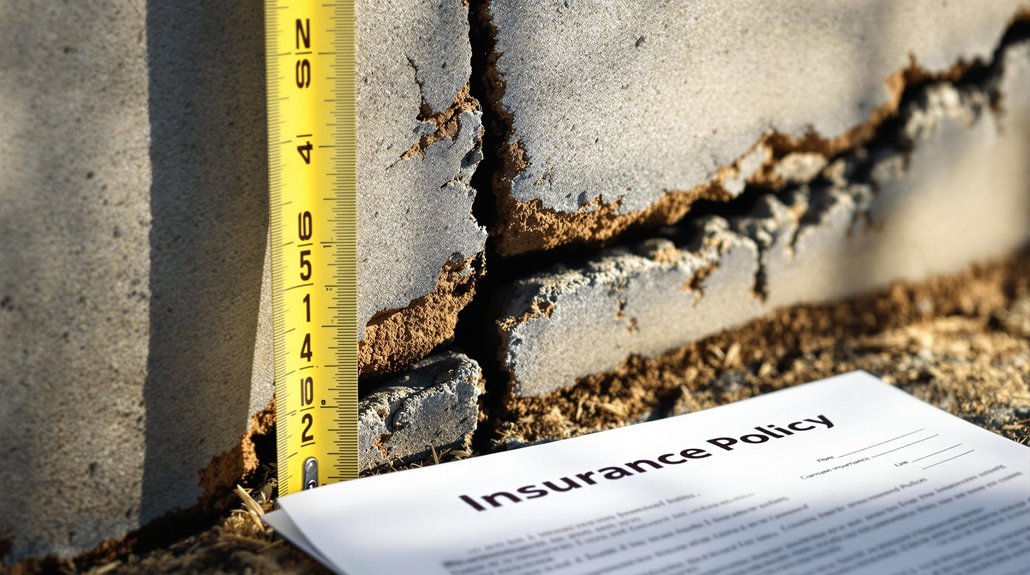
What constitutes a covered foundation repair under a homeowners insurance policy? The answer lies in the cause of the damage. Only foundation repairs caused by covered perils such as fire or severe weather are typically covered. Homeowners insurance usually excludes damage due to normal wear and tear, soil movement, or settling. Understanding your coverage type is critical, as Actual Cash Value policies will pay less for foundation repairs due to depreciation.
| Peril | Coverage |
|---|---|
| Fire or severe weather | Typically covered |
| Normal wear and tear | Excluded |
| Soil movement or settling | Excluded |
| Earthquakes or flooding | Excluded (requires supplemental coverage) |
Policy coverage for foundation repairs can vary. Standard policies like HO3 and HO5 may provide broader coverage, but exclusions remain. Homeowners should review their policy details carefully to understand specific limits and exclusions related to foundation repairs. Supplemental coverage options may be necessary for events not covered by average home insurance.
Frequently Asked Questions
Will Homeowners Insurance Pay for Foundation Problems?
As foundation problems manifest, homeowners anxiously await insurance claims resolutions. Generally, policies cover sudden settlement issues, not gradual ones. Review policy exclusions, coverage limits, and maintenance responsibilities to guarantee structural integrity and mitigate risk to property value.
Are Settling Cracks Covered by Insurance?
Settling cracks are typically excluded from insurance coverage, considered a maintenance issue rather than a covered peril. Policy exclusions often specify that gradual structural damage, including foundation settlement repairs, is not eligible for insurance claims.
Does Homeowners Insurance Cover Structural Defects?
Like an engineer scrutinizing a building's framework, homeowners must examine their policies to determine if structural defects are covered, as coverage limitations and policy exclusions often leave gaps in protection for foundation repairs and liability issues.
What Is the 80% Rule in Homeowners Insurance?
The 80% rule in homeowners insurance stipulates that a dwelling must be insured for at least 80% of its replacement cost to avoid reduced claim payouts, affecting policy limits, premium costs, and claim process outcomes.


